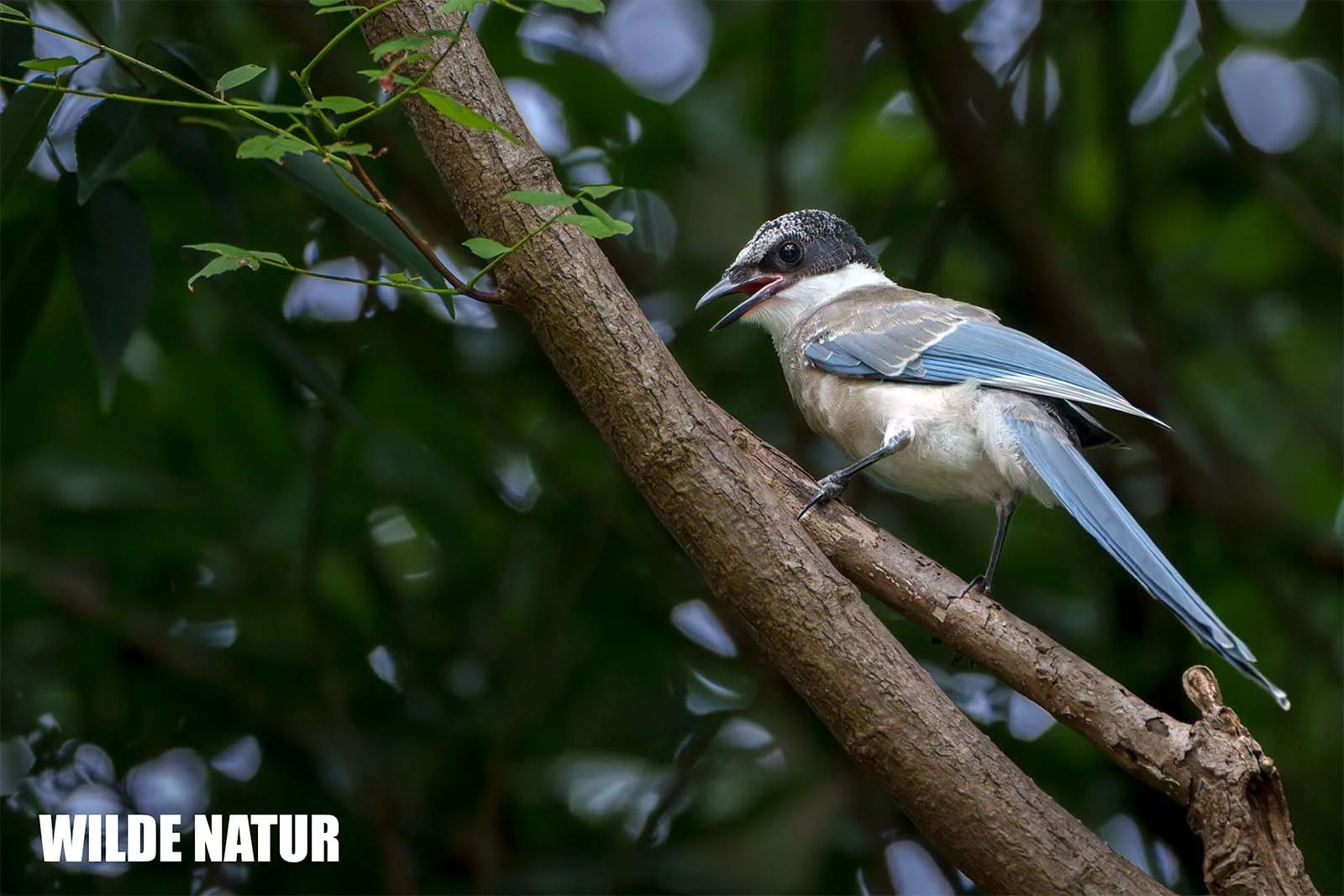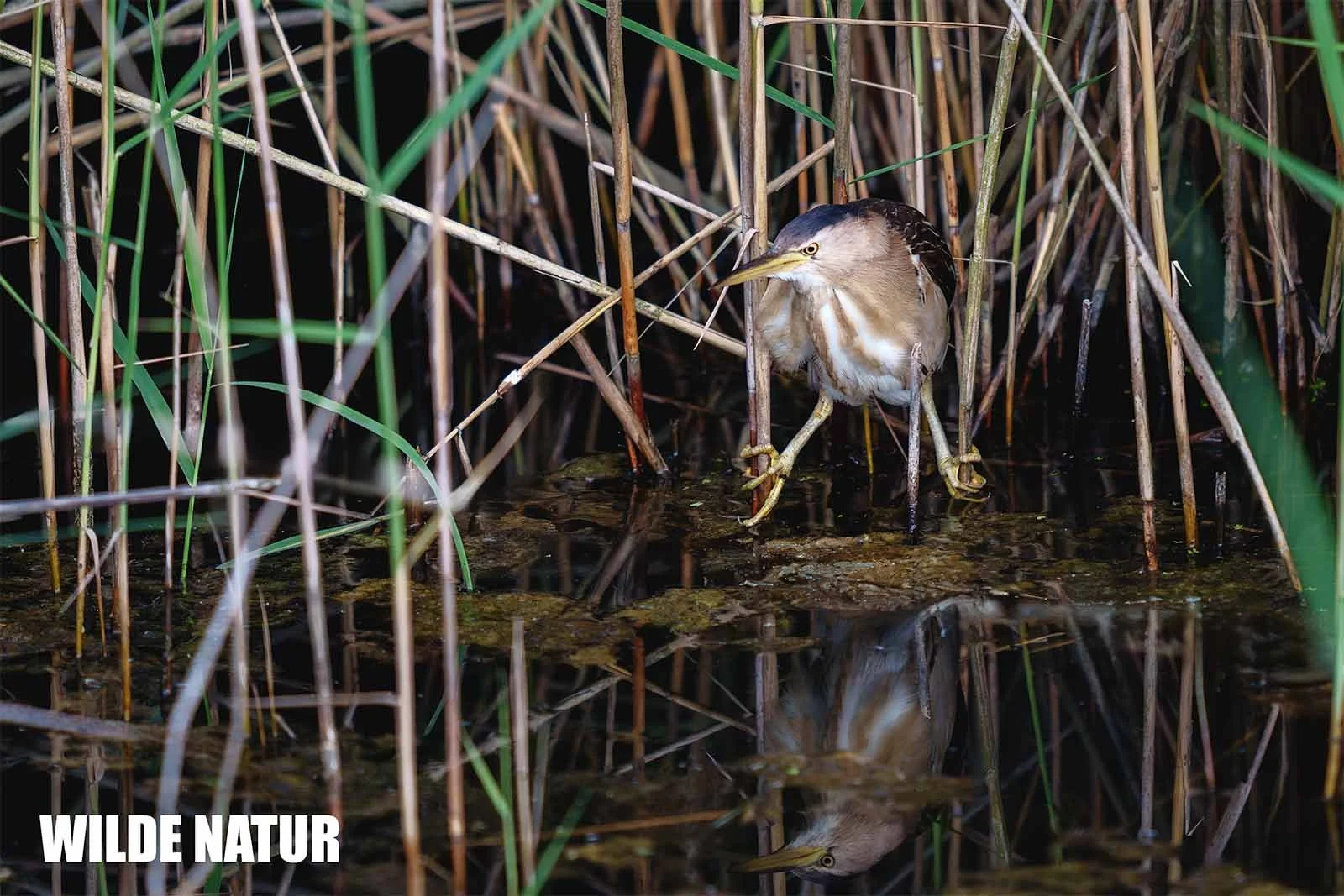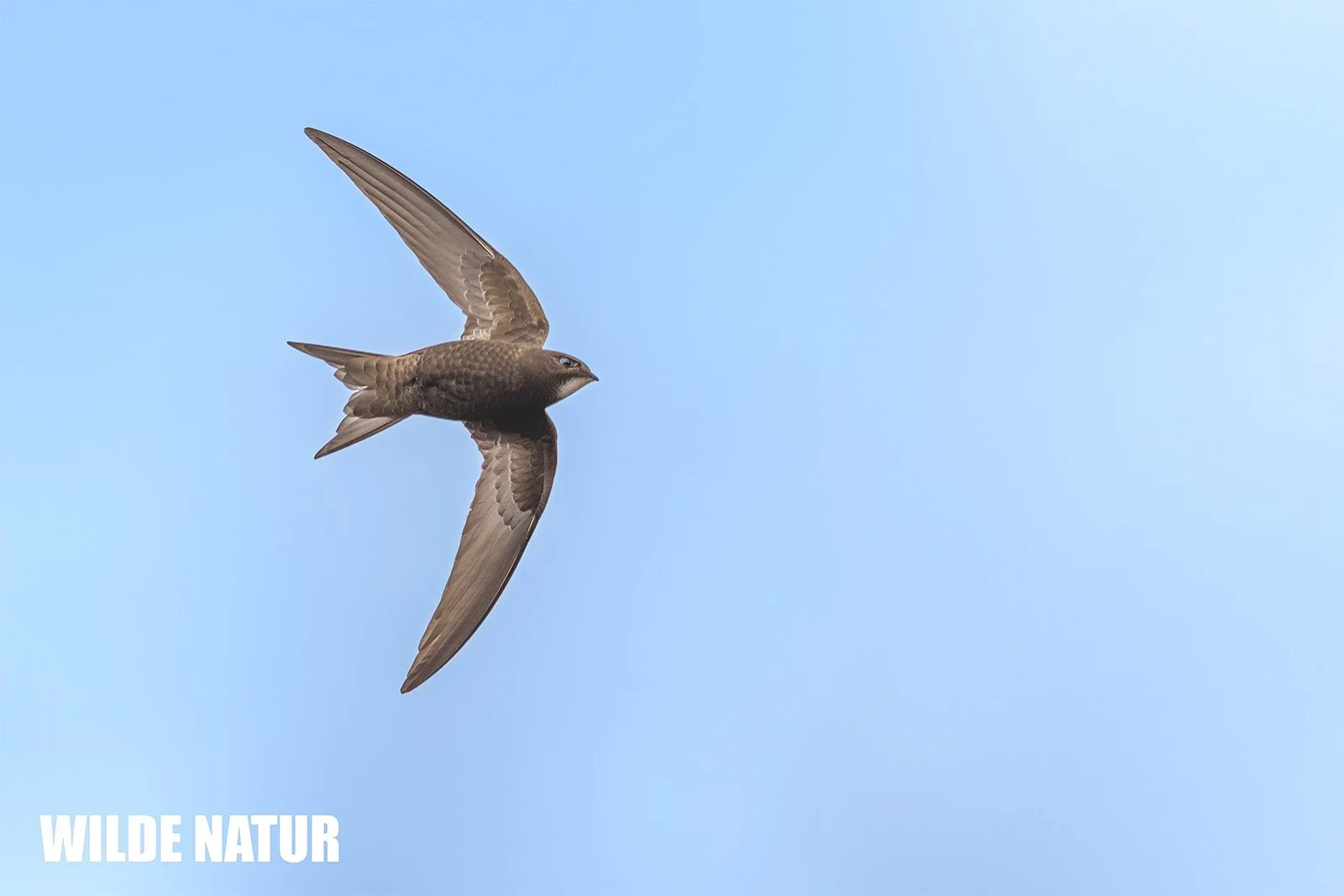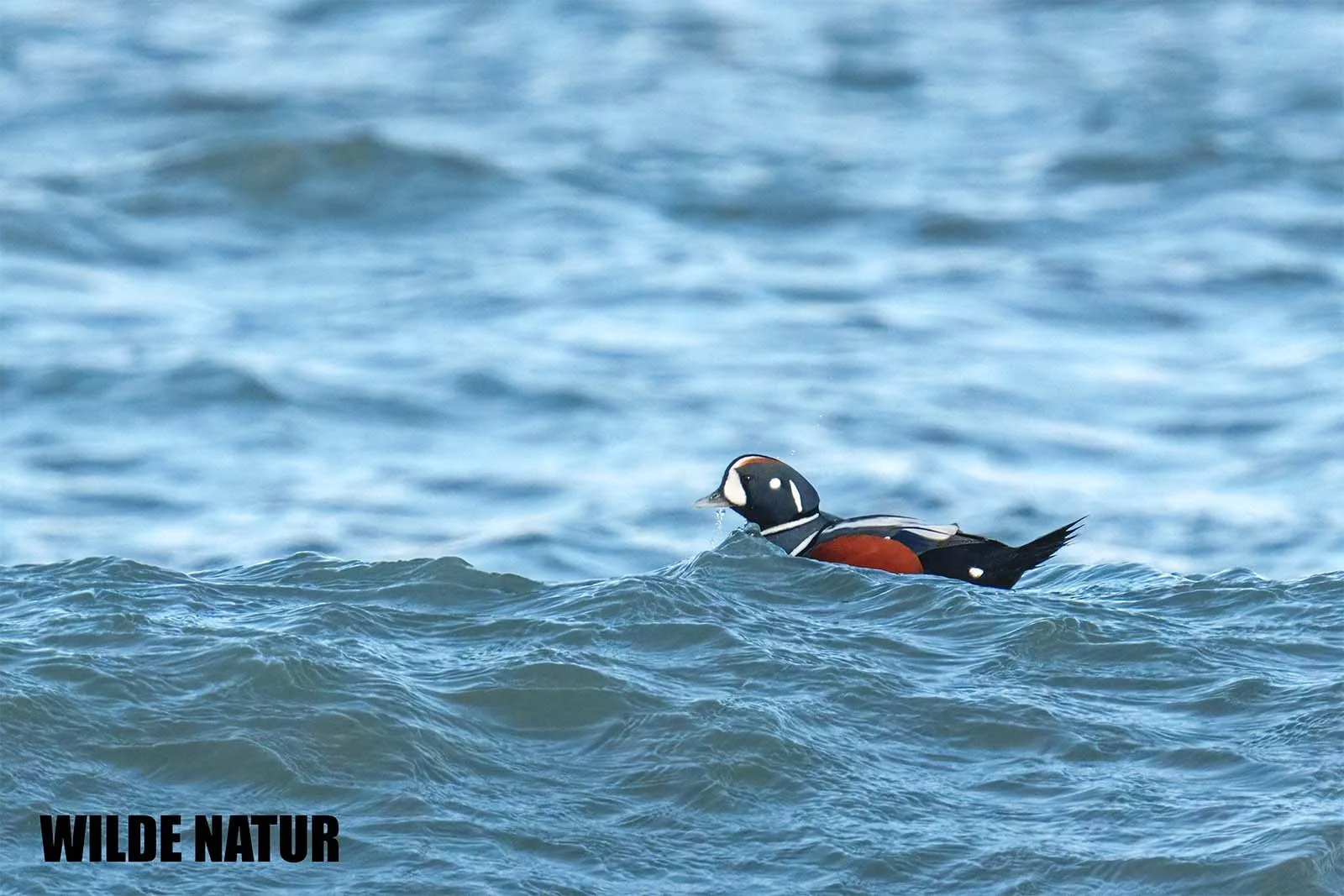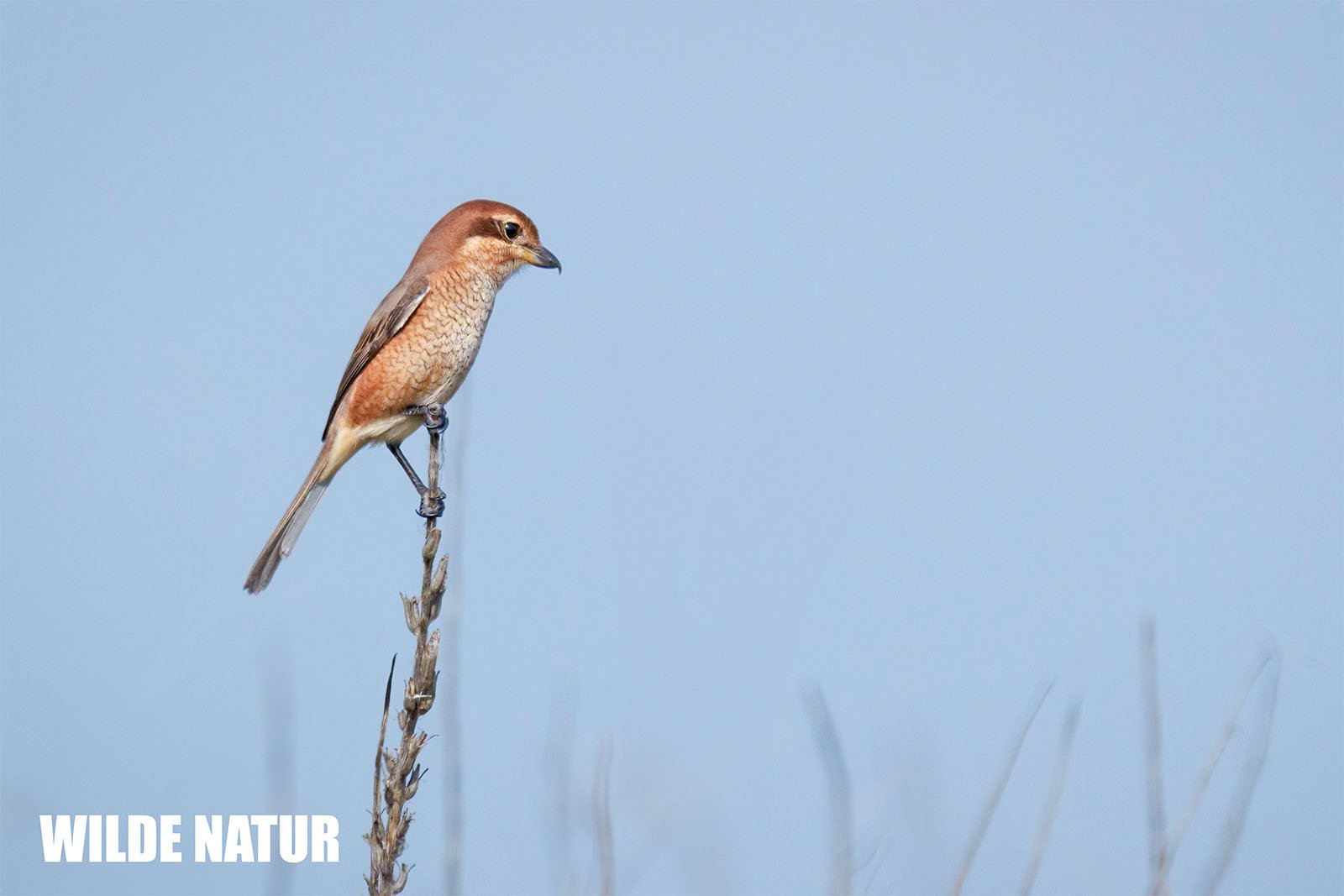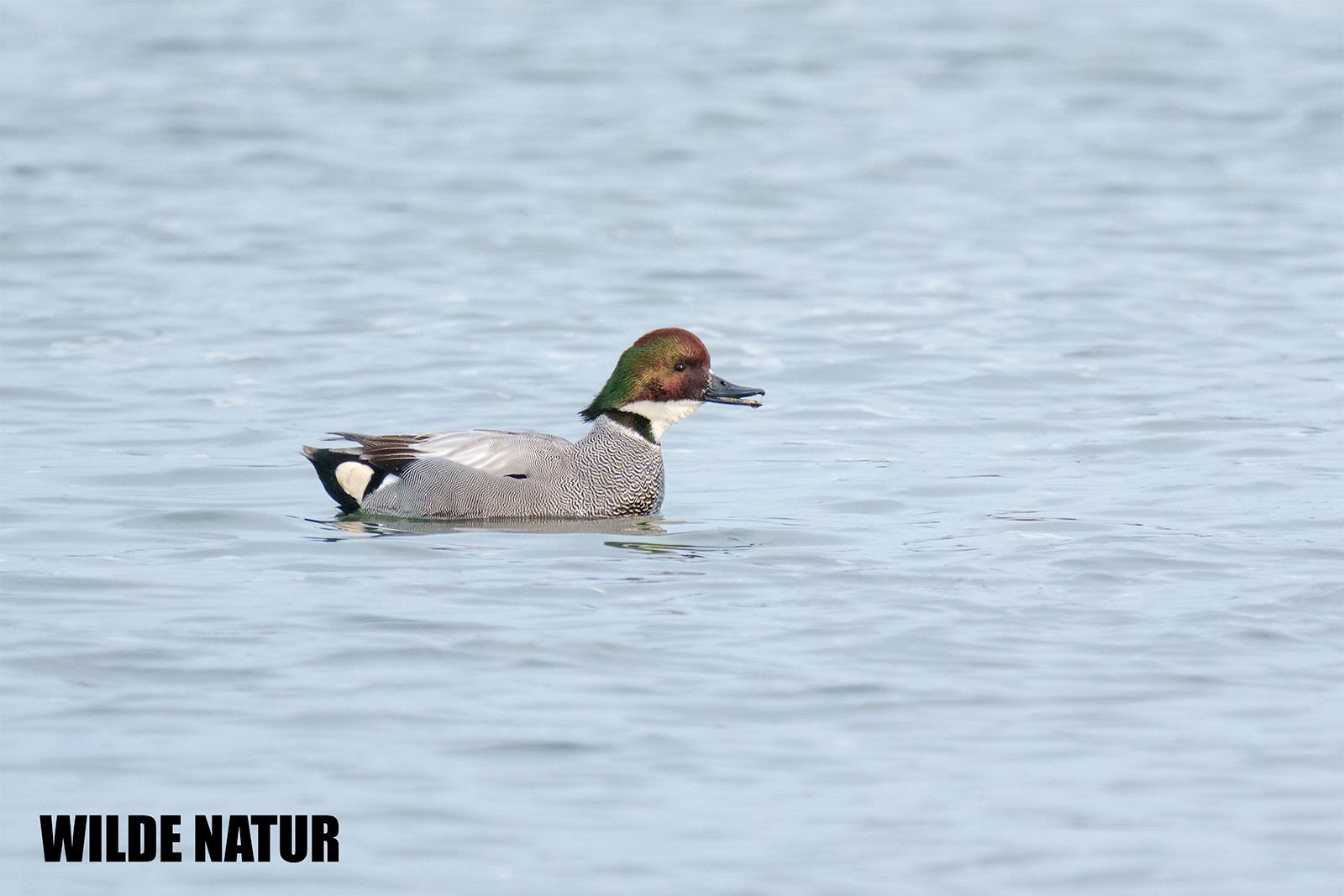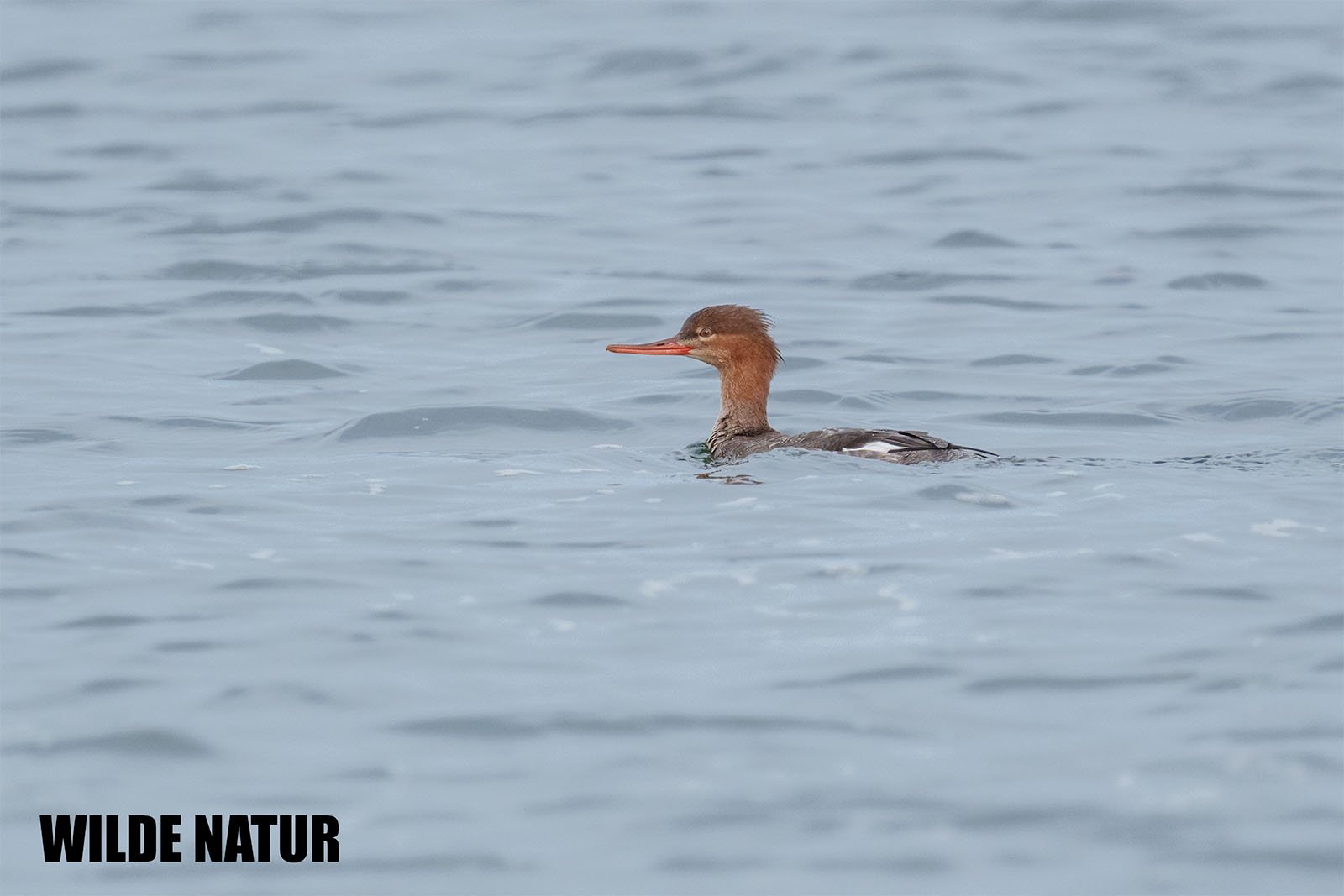Northern shoveler (Spatula clypeata)
Northern shoveler (Spatula clypeata) flying in formation, two of the ducks are males, which can be recognized by their green heads
Northern Shoveler (Spatula clypeata) – The Unique Spoon-Billed Duck
The Northern Shoveler is a medium-sized waterfowl, easily recognized by its spoon-shaped bill. This special bill is not just a striking feature but also perfectly suited to its feeding habits. The Northern Shoveler lives in shallow lakes and wetlands, where it filters food from the water. Its distinct body shape and behavior make it stand out from other duck species.
Quick Facts:
- Size: 44–52 cm
- Features: Long, wide spoon-shaped bill, striking male plumage
- Habitat: Shallow lakes, ponds, and wetlands with dense vegetation
- Breeding: Hidden nests in shoreline vegetation, mostly cared for by the female
- Diet: Small crustaceans, insect larvae, snails, and algae filtered from surface water
Table of Contents
- Introduction: The Northern Shoveler – Adaptation Specialist
- Features and Appearance: How to Recognize the Northern Shoveler
- Habitat and Distribution: Where the Northern Shoveler Lives
- Behavior and Diet: A Water Filter Feeder
- Breeding: Well-Hidden Nesting Spots
- FAQ: Common Questions About the Northern Shoveler
- Shortlist – Key Features
1. Introduction: The Northern Shoveler – Adaptation Specialist
The Northern Shoveler is easy to identify, especially because of its wide, spoon-shaped bill, which not only gives it its name but also shapes its lifestyle. This bill helps the shoveler filter small animals and plants from the water, making it one of the most specialized duck species. Found in wetlands and shallow water bodies across Europe, the Northern Shoveler is most active around dense shoreline vegetation.
2. Features and Appearance: How to Recognize the Northern Shoveler
The Northern Shoveler stands out from other ducks due to its unique appearance.
Plumage: The male Northern Shoveler has very distinctive colors. The head is a shiny dark green, the chest is white, and the sides and belly are a reddish-brown. The large black spoon-shaped bill is its most notable feature. The wings have a white stripe, easily visible during flight. The female, in comparison, has a more subdued brownish-grey plumage, ideal for blending into vegetation.
Bill: The broad, spoon-shaped bill is the Northern Shoveler’s standout feature. Dark grey to black, it is wide at the tip, perfect for filtering small creatures like crustaceans and larvae from the water.
Eyes: The dark eyes of the Northern Shoveler are small and positioned high on its head, giving the bird a calm and alert expression.
Feet: The dark grey to black feet are strong and webbed, allowing the Northern Shoveler to swim with ease and navigate floating plants.
With its wide bill and front-heavy body, the Northern Shoveler has a unique appearance that sets it apart from other ducks.
3. Habitat and Distribution: Where the Northern Shoveler Lives
The Northern Shoveler prefers shallow waters such as lakes, ponds, and marshes with plenty of shoreline vegetation. These wetlands not only provide food but also offer safe nesting spots. The Northern Shoveler is widespread in Europe and is often seen in nature reserves and lake areas. It especially thrives in calm areas where it can breed and filter-feed undisturbed.
4. Behavior and Diet: A Water Filter Feeder
The Northern Shoveler is a “filter feeder,” meaning it eats small animals and plants by filtering them out of the water. Using its wide bill, the shoveler skims over the water’s surface, filtering out tiny crustaceans, insect larvae, snails, and algae. This feeding method makes the Northern Shoveler very efficient at gathering food in nutrient-rich water.
The shoveler often moves slowly and quietly in the water, appearing calm and steady. Its front-heavy body and wide bill give it a somewhat slow and deliberate swimming style.
5. Breeding: Well-Hidden Nesting Spots
The Northern Shoveler builds its nest hidden in dense vegetation along the water’s edge. The female takes care of most of the breeding and incubates about 8 to 12 eggs. After around 22 to 25 days, the ducklings hatch and are guided by the mother until they can find food on their own.
6. FAQ: Common Questions About the Northern Shoveler
1. Where does the Northern Shoveler live?
The Northern Shoveler prefers shallow waters with lots of shoreline vegetation, such as lakes, ponds, and wetlands.
2. What does the Northern Shoveler eat?
It feeds on tiny creatures like small crustaceans, insect larvae, snails, and algae, which it filters from the water with its spoon-shaped bill.
3. How can I recognize the Northern Shoveler?
The Northern Shoveler is easy to identify by its large, spoon-shaped bill and the male’s striking green head and reddish-brown sides.
4. How does the Northern Shoveler behave in water?
The Northern Shoveler moves slowly and quietly in the water, often using its broad bill to filter-feed at the surface.
5. How does the Northern Shoveler build its nest?
The Northern Shoveler builds its nest in dense vegetation near the water, where the female takes care of the eggs and young ducklings.
7. Shortlist – Key Features
- Size: 44–52 cm
- Plumage: Male has a green head, white chest, and reddish-brown sides; female is brown-grey
- Bill: Long, wide, spoon-shaped, dark grey to black
- Eyes: Dark, small
- Feet: Dark grey to black, strong
- Habitat: Shallow lakes, ponds, wetlands
- Diet: Small creatures like crustaceans, snails, algae
The Northern Shoveler is a fascinating water bird, known for its unique bill and specialized feeding habits. Found in wetlands, it’s a bird that captures the attention of birdwatchers and nature lovers alike.



